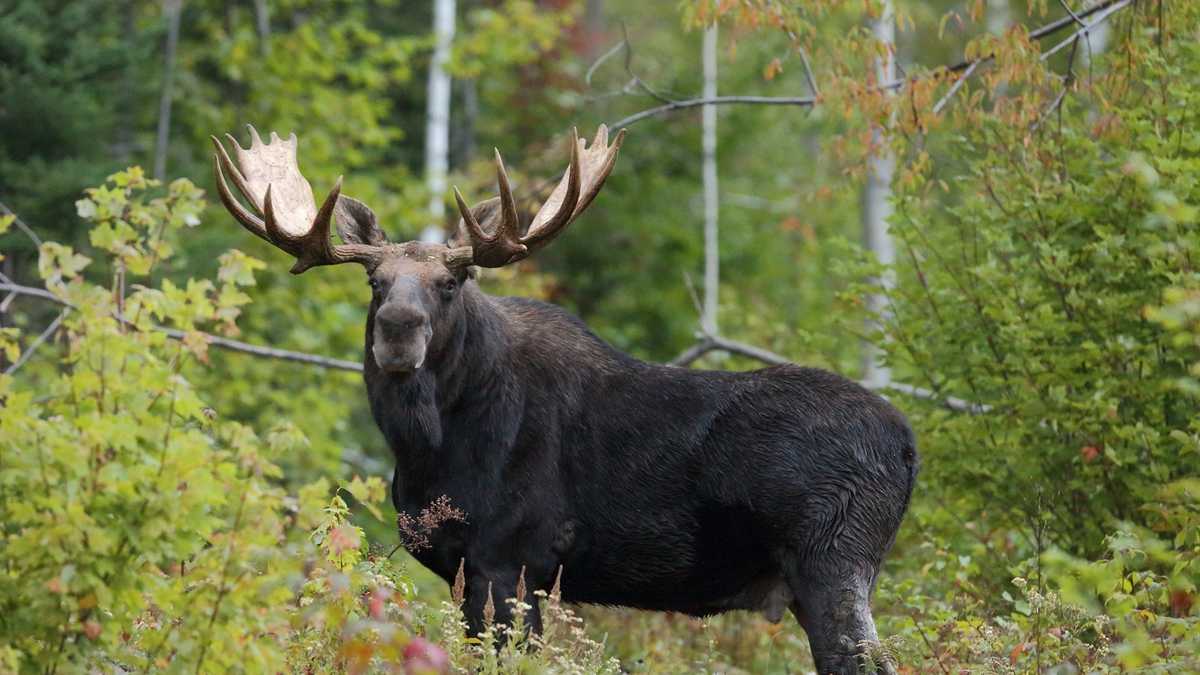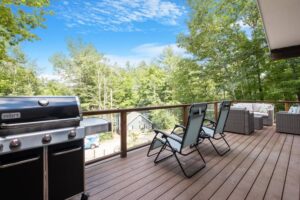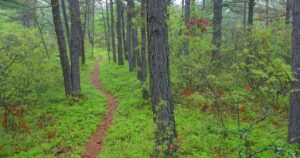Understanding Moose in New Hampshire
Moose are the largest land mammals in New England, often standing over 6 feet tall at the shoulder and weighing more than 1,000 pounds. They’re most active at dawn and dusk and are often spotted near wetlands, bogs, and roadside salt licks where they go to find minerals.
Moose are most commonly seen in spring (May–June) and fall (September–October). During these times, they’re either searching for food post-winter or moving more frequently during mating season (the rut).
Best Places to Spot Moose in New Hampshire
1. Route 16 Through Pinkham Notch
Drive Time from Wakefield: ~1 hour 15 minutes
This is one of the most famous moose-watching routes in the state. The stretch between Gorham and Errol, especially near the Appalachian Mountain Club’s Pinkham Notch Visitor Center, is known for frequent moose sightings — especially at dawn and dusk.
Why Go: Scenic views, high moose population, and great hiking nearby
Tip: Pull over safely if you spot wildlife — and always give moose plenty of space.
2. Route 3 Near Pittsburg (for a Full-Day Trip)
Drive Time: ~2.5 hours (a longer drive but worth mentioning for serious moose enthusiasts)
Known as Moose Alley, this northern stretch of Route 3 near the Canadian border offers some of the most consistent moose sightings in the Northeast. It’s not uncommon to see multiple moose in a single evening.
Why Go: Bucket-list destination for moose lovers
Tip: Consider an overnight stay in the area or plan your trip during peak hours (just before sunset).
3. Wildlife Viewing Areas Near Wakefield
You don’t have to go deep into the North Country to see wildlife. The area surrounding Belleau Lake, Province Lake, and Pine River State Forest is home to deer, beavers, wild turkeys, foxes, and occasional moose.
Spots to Explore Nearby:
- Province Lake Road at dawn or dusk
- Pine River Pond & forest edges
- Conservation lands along Route 153 and Hobbs Road
Tip: Look for wetland edges at sunrise, especially in the spring when wildlife is most active.
Other Wildlife Worth Watching
White-Tailed Deer
Common throughout the Lakes Region. Often seen grazing at the edge of fields, along back roads, and in forest clearings.
Where to Spot:
- Fields near Milton and Brookfield
- Edges of conservation lands in Wolfeboro
Loons and Waterfowl
The haunting call of the common loon is a signature sound of New Hampshire’s lakes. These birds are a symbol of the region and are best seen on calm waters in the early morning or at dusk.
Where to Spot:
- Belleau Lake, Lake Winnipesaukee, and Lake Wentworth
- Bring binoculars and keep your distance — loons are protected and sensitive to disturbance.
Bald Eagles and Ospreys
Raptors are becoming increasingly common in the Lakes Region, especially around large bodies of water where fish are plentiful.
Where to Spot:
- Along the shoreline of Lake Winnipesaukee (Alton Bay and Wolfeboro)
- High tree lines along rivers and wetlands
Black Bears
Though less common to see, black bears do roam the woods of Carroll County. They’re shy and usually avoid people — but they can be spotted from a distance, especially in the early morning hours.
Where to Spot (Cautiously):
- Remote forested areas like Pine River State Forest
- Berry patches and beech groves in late summer
Note: Never feed or approach bears. Carry out all trash and store food securely when hiking or camping.
Tips for Safe and Respectful Wildlife Watching
- Go early or late: Most wildlife is most active during the cooler, low-light parts of the day.
- Stay quiet and patient: Move slowly and listen carefully.
- Bring binoculars or a zoom lens: This allows for close viewing without disturbing the animals.
- Keep your distance: Especially with moose, which can be aggressive if they feel threatened.
- Drive carefully at night: Moose can be hard to spot on the road and collisions can be dangerous.
Make It a Day Trip (or a Slow Morning)
Wildlife watching pairs perfectly with a scenic drive, an early morning paddle, or a relaxed hike. Many of these animals are right outside your cabin door — especially if you’re staying near Belleau Lake or exploring the quiet trails around Wakefield.
Grab a thermos of coffee, a field guide for birds or mammals, and make it a slow, intentional part of your Lakes Region getaway.
Final Thoughts: Wild New Hampshire Awaits
Whether you’re catching a glimpse of a moose through the trees, listening to a loon call across the water, or watching deer wander across a back road, wildlife encounters in New Hampshire are always memorable. With a bit of patience (and a lot of quiet), you’re never far from a moment of wonder.
Planning your wildlife-filled escape? Book your stay at Belleau Lake Escape — a peaceful retreat in the heart of New Hampshire’s Lakes Region, surrounded by nature and ideal for early morning moose-spotting adventures.





